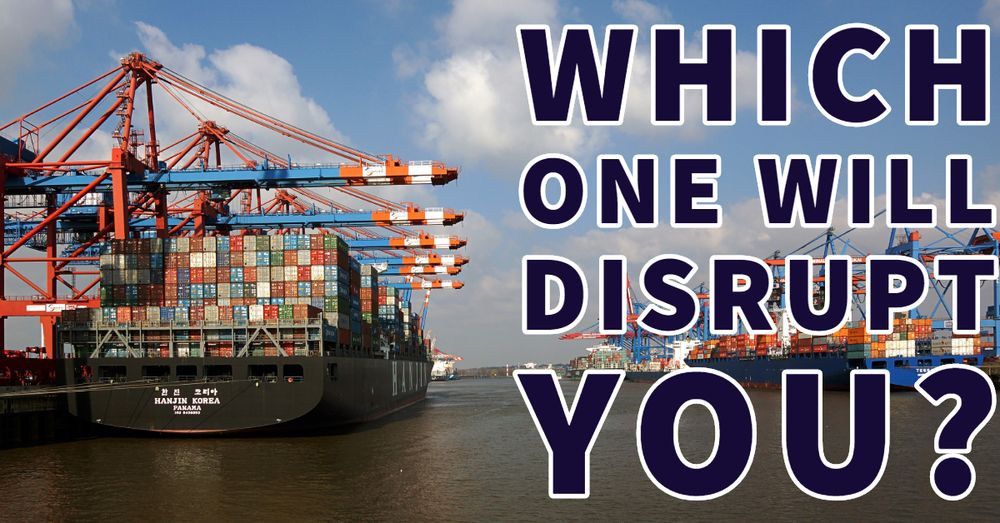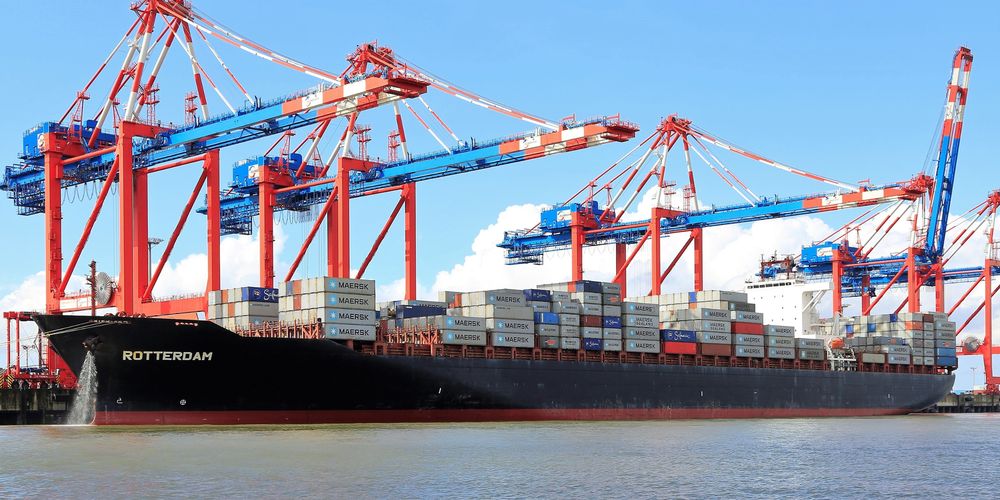
4 Outcomes for NZ Importers & Exporters During the Next 25 Years
5-minute read
We looked at a document called “Brave new world? – Container transport in 2043” published by leading international freight transport insurer TT Club, in conjunction with global management consulting firm McKinsey.
The report aims to set out what the future holds for the container industry over the next 25 years.
We set the scene by analysing why the container industry has suffered from chronic unprofitability – namely a mismatch between the additions of shipping capacity and the actual growth in demand, plus an industry characterised by short-term commercial competition on the back of investments in long-life assets.
Plus, there are inefficiencies throughout the supply chain. About half of container ships arrive at least 12 hours late. Terminals sit idle and then are congested when vessels bunch.
Truckers wait for pick-ups and retailers carry extra inventory because they can’t rely on just-in-time delivery.
From all this, Brave new world comes up with five broad conclusions:
- namely that the physical characteristics of the industry are unlikely to change, as the containers and the ships that carry them will still exist over the next 25 years;
- that global trade flows will become more balanced;
- that automation will be broadly adopted;
- that digital technology, data and analytics will have a fundamental impact on the supply chain;
- that industry leaders in 2043 will look very different to now, because of consolidation and changed business models.
So let’s move on to the meat of the report and start with where TT Club and McKinsey see opportunities to create value going forward.
They list six areas of opportunities:
- greater economies of scale;
- flexibility;
- supply chain reliability and predictability;
- consolidation and integration;
- automation and productivity;
- environmental performance.
These are not dyed-in-the-wool certainties for producing better results. They could also be areas of failure if the wrong approach is taken. It is up to individual companies to focus on these six and plot the best path forward.
In terms of greater economies of scale, TT Club and McKinsey say that to the extent container shipping remains commoditised (shippers going for price over quality or speed of transit) shipowners may continue to build larger vessels.
The top five container lines control 2/3 of the market – a statistic which suggests they should be able to heavily influence profitability.
The reason that the lines haven’t profited is becauseshipping has become conmmoditiesd and there has been a mismatch between the addition of capacity (bigger vessels) and actual grwoth in demand.
Many containerised goods now take up less space and therefore fill fewer containers. A 20ft container that took 100 old-style tube televisions now might take 600 flat-screens.
The shipping investments only pay off if the ship is filled, which compels the carriers to go looking for volume to fill them.
The problem is that the unit cost payoffs will diminish with each new expansion, because of the port and hinterland congestion caused by bigger ship exchanges.
On the other hand, if shippers go for flexibility of service rather than price, this may encourage smaller ships to be used on point-to-point networks, which would ensure a faster turnaround in the ports.
Regarding supply chain reliability and predictability, the report says customer needs are changing as e-commerce alters consumer expectations and last-mile distribution.
More reliable sea transport legs with digitised document flows, with integrations between the carrier, ports.
Customs, transport operators and other agencies, could make the ship an extension of the warehouse.

Smaller ships again have an advantage in that they may improve supply chain reliability.
More consolidation and integration remains valid in the container industry, says TT Club and McKinsey. They would enable better timing of capacity increases, reducing the rate volatility caused by current supply/demand mismatches.
Consolidation would also help the digital data flow, overcoming the differences between systems used by lines and the reluctance to share commercial information.
Automation will be a focus to reduce cost and improve productivity. Terminal automation is one necessity.
Bigger ships mean cranes reach further to get containers which takes more time, and more containers mean yard congestion which further slows operations.
Jobs in the supply chain are seen as having the potential for automation. These include crane operator, truck driver and even Customs officer, as well as onboard crewing tasks.
In terms of environmental performance, the challenges of changing to low-sulphur fuels and curtailing emissions are already known and will become more evident in future.
From all of the six areas of opportunity mentioned above, Brave new world concludes by distilling this analysis into four possible (and different) visions for the future.
It involves judgement calls on how these trends will play out and TT Club and McKinsey accept they can’t predict with certainty.
The four visions are called:
- “digital reinvention”;
- “digital disruption”;
- “third wave of globalisation” and
- “peak container and consolidation”.
Under “digital reinvention”, the main players get even stronger. Only four to five big names remain.
Vertical integration becomes the strategic imperative to build effective digital platforms and operating systems that cater for end-to-end demand.
Data and technologies such as blockchain provide reliability and transparency in the supply chain.
Scale economies lose value, as flexibility and deep integration into customer supply chains increase. The flexibility of smaller ships is recognised more.
“Digital disruption” refers to a world in which some of today’s incumbents struggle. They fail to move with the digital times and are overtaken by “digital natives” – examples being companies such as Amazon and Uber who come up with new solutions.
They leverage technology to control more of the supply chain and cargo flows.
The “third wave of globalisation” posits that India achieves the economic growth that has previously been the domain of China. Middle-class demand from Africa also comes on stream.
In this scenario, container lines respond by aiming once more for growth and seek larger vessels of 30,000 TEUs ( Twenty-Foot Equivalent Unit) or more to handle the volumes in these trades.
Finally, there is the “peak container and consolidation” scenario – the worst possible for the industry.
Geopolitical conflict, nationalism and trade disputes have suffocated trade volumes. The onset of 3D printing has further dampened demand, and advanced robotics have encouraged “near-shoring” of production.
Falling freight rates have weeded out the least-profitable players and three or four leading lines remain. Containerised trade has peaked and is in decline.
There you have four potential scenarios – or a possible mix of the four – for the container industry 25 years hence.

There are some “no regret” moves that industry players can make now, regardless of which scenario plays out.
They can pay more attention to consumer preferences in last-mile logistics; they can radically digitise their operations and automate where possible. Such moves have no downsides.
Source: NZ Shipping Gazette
P.S. We’d love to answer any of your questions! Contact us now. Do you know of other people that will find this article useful? Please share it on social media. Thank you!
